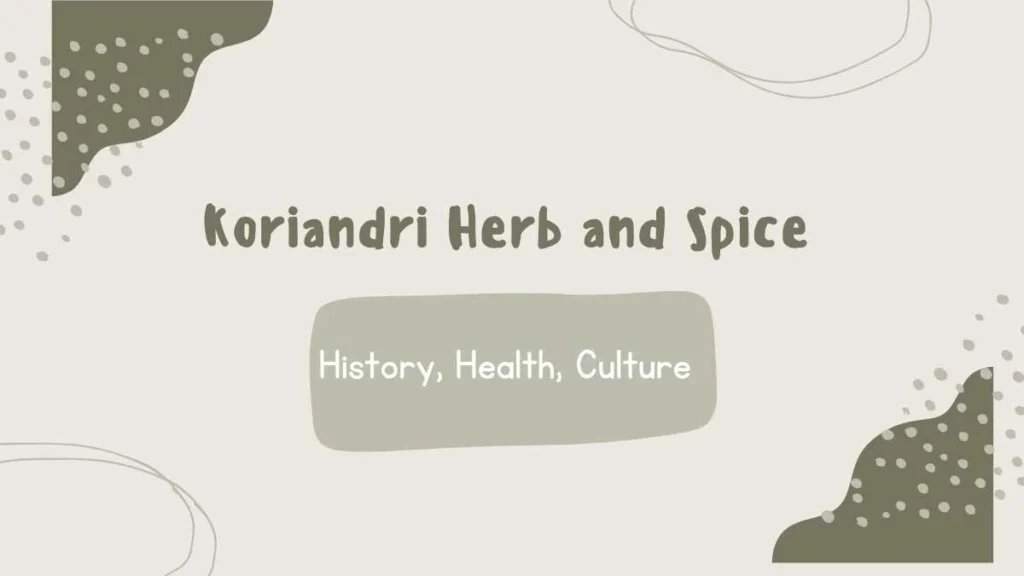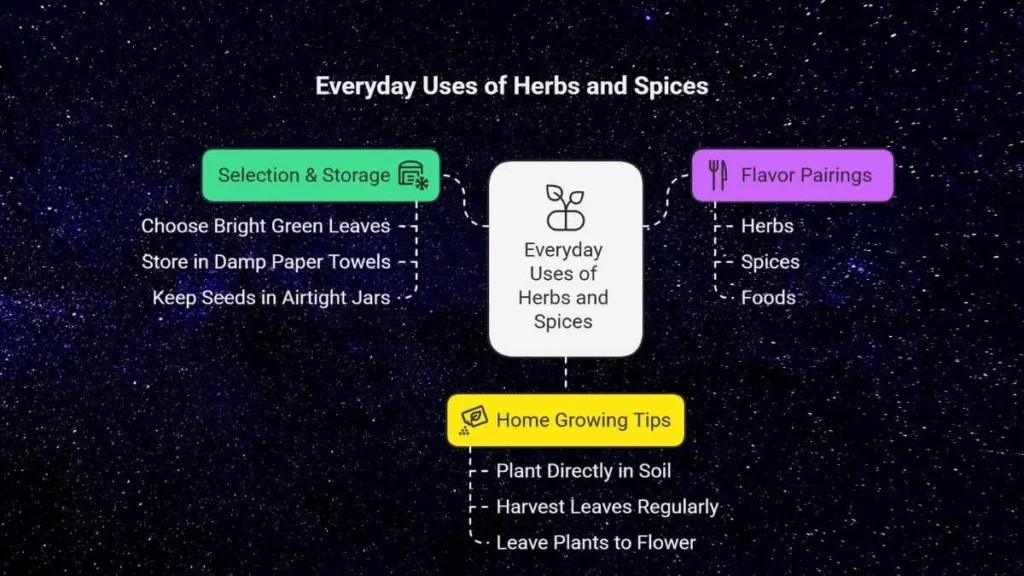FOOD AND DRINKS
Koriandri: Complete Guide to Culinary, Health & Global Relevance

Koriandri is a traditional name for coriander (Coriandrum sativum), a fragrant herb and spice used across cuisines, medicines, and cultures worldwide. What is koriandri? Simply put, it is both a leafy herb (cilantro) and a dried spice (coriander seeds) that together form one of the most versatile ingredients in global kitchens. From fresh garnishes to aromatic seed blends, koriandri shapes taste and wellness in profound ways.
Koriandri has a deep history stretching back thousands of years, appearing in Egyptian tombs, ancient Indian texts, and Mediterranean recipes. Today, it bridges heritage and modern lifestyles, valued not only for flavor but also for its nutrients, antioxidant potential, and cultural symbolism. This article explores its history, uses, cultivation, nutrition, and health benefits presented in clear, user-friendly language with authoritative insights.
Table of Contents
Origins and Heritage
Coriander belongs to the Apiaceae family, which it shares with parsley, dill, fennel, and celery. What makes koriandri remarkable is its ability to offer two entirely distinct culinary experiences from the same plant. The fresh leaves, commonly known as cilantro in many parts of the world, carry a bright, citrus-like, and slightly pungent flavor that instantly lifts salads, chutneys, soups, and salsas. In contrast, the dried seeds are warm, nutty, and earthy with subtle citrus undertones, making them indispensable in curries, stews, pickles, and spice blends across cultures. This versatility has earned coriander a permanent place in both household kitchens and global gastronomy.
Historically, koriandri has an impressive legacy. Archaeological findings reveal it was cultivated over 3,000 years ago, with seeds discovered in ancient Egyptian tombs. It was valued in Ayurvedic medicine for digestive health, used in traditional Chinese remedies, and featured in Roman cuisine, where its dual role as food and healing herb symbolized balance between nourishment and wellness.

Cultivation and Characteristics
Growing Basics
- Prefers full sun to partial shade.
- Best temperature: 15–25 °C.
- Grows well in loose, well-drained soil.
- Direct sowing is recommended due to taproot sensitivity.
Harvesting Cycle
- Leaves: 3–4 weeks after sowing.
- Seeds: 6–8 weeks after flowering.
- To extend the harvest, sow new seeds every 2–3 weeks.
Global Culinary Roles
Fresh Leaf Applications
In South Asia, koriandri leaves are widely used as garnishes for curries, daals, and biryani. In Latin American cuisine, they add brightness to salsa, guacamole, and ceviche. Middle Eastern dishes often incorporate them into salads and dips such as tabbouleh and hummus.
Seeds and Spice Mixes
In India and Pakistan, coriander seeds form the core of curry powders and garam masala. Across Europe, they are popular in pickling brines. In the Middle East and North Africa, coriander seeds are commonly blended with cumin for rubs and marinades.
Essential Oils
Extracted from the seeds, coriander oil is valued for flavoring baked goods and confectionery. It also finds a place in perfumery and aromatherapy for its warm, spicy aroma.
Nutritional Profile
| Component | Fresh Leaves (per 100g) | Seeds (per 100g) |
| Calories | 23 kcal | 298 kcal |
| Vitamin C | 27 mg | 21 mg |
| Vitamin K | 310 µg | Trace |
| Potassium | 521 mg | 1267 mg |
| Magnesium | 26 mg | 330 mg |
| Fiber | 2.8 g | 41 g |
Health Insights
Koriandri demonstrates strong antioxidant power, largely due to compounds like linalool and flavonoids. It has also been valued as a digestive aid, traditionally used to ease bloating and indigestion. Some studies suggest a role in blood sugar control, showing potential to improve insulin sensitivity. In addition, certain extracts may display antimicrobial traits, with the ability to inhibit harmful bacteria in controlled settings.
Note: Research is ongoing. Benefits are promising but not a substitute for medical treatment.
Economic and Cultural Role
India is the largest global producer of koriandri, contributing significantly to international spice markets. Beyond agriculture, it plays an important role in traditional rituals, folk medicine, and a wide variety of cultural dishes. Across many societies, koriandri stands as a symbol of freshness and balance in food traditions worldwide.
Everyday Uses
Selection & Storage
- Choose bright green leaves without yellowing.
- Store wrapped in damp paper towels inside an open bag.
- Keep seeds in airtight jars, away from light.
Flavor Pairings
- Herbs: mint, parsley, basil.
- Spices: cumin, fennel, pepper.
- Foods: citrus, legumes, grilled meats.
Home Growing Tips
- Plant directly in soil or pots.
- Harvest leaves regularly to extend growth.
- Leave some plants to flower for seeds.

Trends and Future Outlook
Sustainability is shaping the future of koriandri, with organic and regenerative farming practices gaining popularity. Scientific exploration is expanding, with deeper studies focusing on cardiovascular and metabolic benefits. In culinary innovation, coriander oils, cocktails, and modern fusion cuisines highlight the herb’s evolving role.
FAQs
Q1: Can koriandri seeds be used for herbal teas?
Yes, lightly crushed seeds make soothing digestive teas.
Q2: Does koriandri taste different in leaves and seeds?
Yes, leaves are citrusy and fresh, seeds are earthy and warm.
Q3: Is koriandri suitable for container gardening?
Absolutely, it thrives well in pots on balconies or patios.
Conclusion
Koriandri is more than a spice; it is a cultural bridge, a health-supportive herb, and a culinary essential. Its dual identity as fresh cilantro and dried coriander seeds allows it to adapt across global cuisines and generations.
From ancient medicinal traditions to modern kitchens, koriandri continues to connect people through taste, aroma, and nutrition. Adding this timeless herb to meals not only enhances flavor but also carries centuries of cultural and wellness heritage.
-

 FRIENDSHIP MESSAGES4 weeks ago
FRIENDSHIP MESSAGES4 weeks ago100+ Heart Touching Sorry Messages for Friends
-

 ANNIVERSARY WISHES5 months ago
ANNIVERSARY WISHES5 months ago100+ Beautiful Engagement Anniversary Wishes Messages and Quotes
-

 BIRTHDAY WISHES4 months ago
BIRTHDAY WISHES4 months ago300+ Happy Birthday Wishes for Brother | Heart Touching Happy Birthday Brother
-

 BIRTHDAY WISHES5 months ago
BIRTHDAY WISHES5 months ago200+ Unique Birthday Wishes for Your Best Friend to Impress on Their Big Day




































